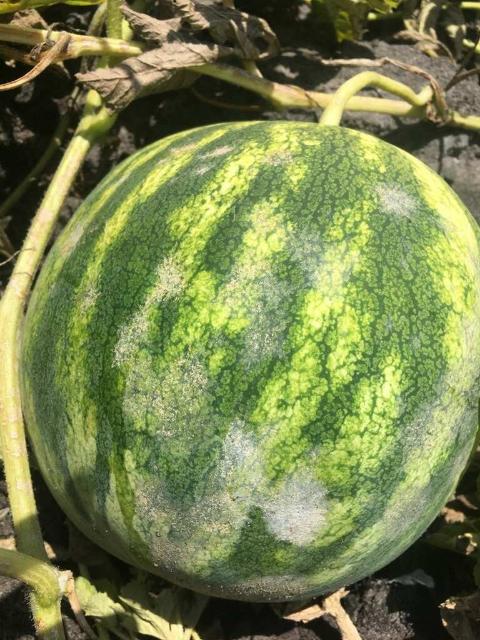By Clint Thompson

Lab testing has confirmed powdery mildew disease in watermelon in the Suwanee Valley region of Florida.
Growers should be proactive in beginning their fungicide spray programs, says Bob Hochmuth, University of Florida Institute of Food and Agricultural Sciences (UF/IFAS) Regional Specialized Extension agent in Live Oak, Florida.

“We got the first confirmation, and it was very good fortune, I think. The samples, we were actually looking for something else, but the lab cultured powdery in it as well,” Hochmuth said. “The conditions are right, and we’ll start seeing I’m sure confirmations all over the region this week.”
Hochmuth recommends that growers rotate between the fungicides Quintec and Procure. Switch could be another option later in the season.
“It’s one of those diseases that you don’t want to wait on. We don’t have excellent, go-to-battle type of materials for powdery. The best strategy is to get ahead of it and stay ahead of it as a preventative more than a curative,” Hochmuth said. “Yes, 100%, we are suggesting that they go ahead and add that in their next spray application within this week.”
Symptoms of the disease on watermelon plants appear as yellow blotches on the oldest leaves first. The fungus spreads to the entire leaf if the disease is left untreated. These blotches become bronzed and turn dark brown or purplish as the disease progresses during the season.
“No. 1, it’s hard to control. The damage itself, it basically debilitates the leaves from their ability to do the photosynthesis work. It encompasses the entire leaf in bad situations,” Hochmuth said. “It reduces yield as a result of the impact on the leaves’ ability to do photosynthesis.”
Growers in neighboring states should be mindful of this early detection in protecting their watermelon crop as well.
“Certainly, it’s time for Georgia and Alabama and other areas to get serious about scouting, looking for it and getting samples submitted if they are suspecting that there could be powdery,” Hochmuth added.










